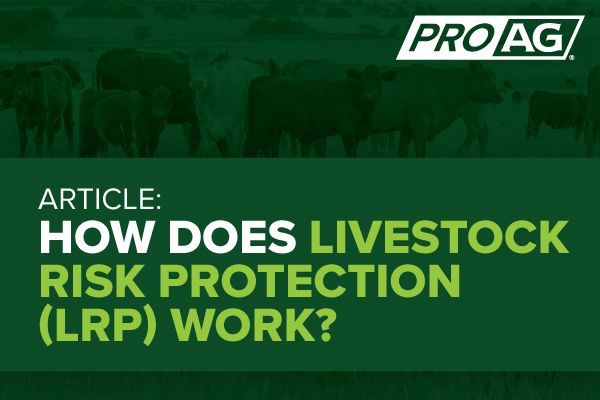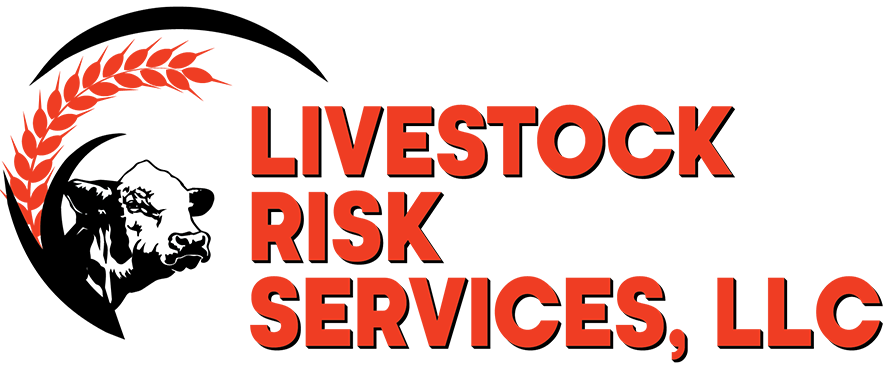Boost Your Proficiency with Bagley Risk Management
Comprehending Animals Danger Security (LRP) Insurance Policy: A Comprehensive Overview
Navigating the realm of animals risk defense (LRP) insurance coverage can be an intricate undertaking for lots of in the farming market. From just how LRP insurance policy works to the numerous protection choices offered, there is much to reveal in this extensive overview that can potentially shape the means animals producers approach threat management in their organizations.

Just How LRP Insurance Coverage Works
Occasionally, understanding the mechanics of Animals Threat Defense (LRP) insurance policy can be complicated, yet damaging down how it functions can provide quality for herdsmans and farmers. LRP insurance policy is a threat administration tool created to shield livestock producers versus unforeseen rate declines. The policy enables manufacturers to establish a coverage level based upon their particular requirements, selecting the number of head, weight variety, and protection rate. When the policy remains in area, if market prices drop below the protection price, producers can sue for the difference. It's vital to note that LRP insurance is not an income assurance; instead, it concentrates only on price danger security. The coverage period normally ranges from 13 to 52 weeks, giving adaptability for manufacturers to choose a period that aligns with their production cycle. By using LRP insurance coverage, farmers and ranchers can reduce the financial threats related to changing market value, guaranteeing better stability in their procedures.
Qualification and Protection Options

When it comes to insurance coverage choices, LRP insurance policy uses manufacturers the versatility to select the coverage level, insurance coverage duration, and endorsements that ideal match their threat monitoring demands. By recognizing the qualification requirements and coverage alternatives readily available, livestock producers can make enlightened choices to handle danger efficiently.
Benefits And Drawbacks of LRP Insurance
When evaluating Animals Danger Security (LRP) insurance, it is vital for livestock producers to evaluate the disadvantages and advantages inherent in this threat monitoring device.

One of the primary advantages of LRP insurance policy is its ability to supply protection against a decline in animals rates. This can help secure manufacturers from financial losses arising from market changes. In addition, LRP insurance coverage supplies a level of versatility, permitting producers to tailor insurance coverage degrees and policy durations to suit their particular requirements. By securing an assured price for their livestock, producers can better handle threat and strategy for the future.
Nonetheless, there are additionally some disadvantages to consider. One restriction of LRP insurance is that it does not safeguard against all kinds of dangers, such as illness outbreaks or natural calamities. Moreover, premiums can often be expensive, especially for producers with huge animals herds. It is crucial for manufacturers to carefully assess their from this source individual threat direct exposure and monetary circumstance to figure out if LRP insurance coverage is the ideal threat management tool for their procedure.
Comprehending LRP Insurance Premiums

Tips for Making The Most Of LRP Conveniences
Taking full advantage of the advantages of Livestock Risk Security (LRP) insurance policy calls for calculated preparation and aggressive risk administration - Bagley Risk Management. To make More Info the many of your LRP coverage, think about the adhering to tips:
Consistently Assess Market Conditions: Keep informed regarding market fads and cost variations in the animals industry. By checking these aspects, you can make enlightened choices regarding when to buy LRP coverage to secure against prospective losses.
Set Realistic Coverage Levels: When choosing insurance coverage degrees, consider your manufacturing expenses, market price of livestock, and prospective dangers - Bagley Risk Management. Setting reasonable coverage degrees makes certain that you are effectively shielded without overpaying for unnecessary insurance
Diversify Your Insurance Coverage: Rather of counting exclusively on LRP insurance coverage, think about diversifying your risk management strategies. Combining LRP with various other danger administration devices such as futures agreements or alternatives can provide comprehensive coverage versus market unpredictabilities.
Testimonial and Readjust Protection Routinely: As market problems alter, periodically assess your LRP protection to ensure it aligns with your existing danger exposure. Changing protection degrees and timing of acquisitions can help maximize your risk security method. By adhering to these tips, you can take full advantage of the benefits of LRP insurance policy and protect your animals operation against unpredicted dangers.
Verdict
Finally, animals risk defense (LRP) insurance is a useful device for farmers to manage the economic risks related to their animals operations. By recognizing how LRP works, qualification and coverage options, in addition to the advantages and disadvantages of this insurance coverage, farmers can make enlightened choices to safeguard their source of incomes. By carefully thinking about LRP costs and implementing methods to take full advantage of advantages, farmers can mitigate prospective losses and make certain the sustainability of their procedures.
Livestock manufacturers interested in acquiring Animals Danger Protection (LRP) insurance policy can check out a variety of qualification standards and insurance coverage options customized to their specific animals operations.When it comes to protection choices, LRP insurance offers producers the flexibility to select the protection degree, insurance coverage duration, and recommendations that best suit their danger management demands.To understand the ins and outs of Animals Danger Security (LRP) insurance policy fully, understanding the variables affecting LRP insurance premiums is critical. LRP insurance policy costs are determined by different components, consisting of the insurance coverage level selected, the expected price of livestock at the end of the coverage period, the type of animals being guaranteed, and the length of the protection period.Evaluation and Adjust Insurance Coverage Frequently: As market conditions transform, occasionally assess your LRP insurance coverage to ensure it aligns with your existing risk direct exposure.